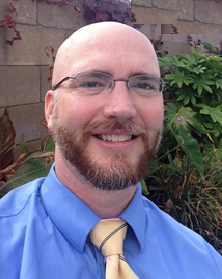Date: October 3, 2022 (Season 5, Episode 5: 53 minutes 56 seconds). Click here for the BuzzSprout version of this Speak Your Piece episode. Are you interested in other episodes of Speak Your Piece? Click here. The above photo is of Spencer W. Kimball, the 12th president of The Church of Jesus Christ of Latter-Day Saints, seated with four Navajo young women and girls. Photograph courtesy of ICTnews.org. This episode was co-produced by Brad Westwood, Chelsey Zamir, and James Toledo, with sound engineering and post-production editing, from Jason T. Powers of the Utah State Library Recording Studio.
The opinions shared in this podcast episode represents the historic research of our guests and does not reflect the official views of the state of Utah.
Content Advisory: This SYP series is about Utah’s Native American boarding school era, which spanned from the mid-1800s to approximately 1980s, when Native American children (ages 5 to 18+) were forcibly removed, then later encouraged, to leave their families and communities, in order to receive a 1-7 and later K-12 education. This history can be emotionally challenging for any listeners but even more so for those who experienced it, either first-hand or through multi-generational effects. If you or someone you know needs to talk to someone regarding the traumatic effects related to this history, contact the 988 Suicide & Crisis Lifeline for Native Americans and Alaska Natives at 1-800-985-5990.
This episode is part three of a five-part series about Native American boarding schools in the Intermountain West and in Utah. In this episode, Western Historian Matthew Garrett discusses his 2016 book Making Lamanites: Mormons, Native Americans, and the Indian Student Placement Program, 1947-2000 (University of Utah Press) with SYP co-hosts Brad Westwood and James Toledo. Garrett’s book, which received the Best Book award from the Utah Division of State History in 2017, focuses on the education of Native American, mostly Navajo (Diné) children, as offered by The Church of Jesus Christ of Latter-day Saints (hereafter LDS Church) from 1947 to 2000.
The program was a voluntary foster care program, where Native American youth were hosted in church members’ homes, while attending local public school, for nine months or more of each year, across Utah, the Intermountain West and in some cases as far as California and Canada. For Native American parents, the hope was that their children would receive a better education than what was offered at nearby federally managed schools; the program requirements initially were parental approval. After 1954, when it became a church-wide program, placement also included current membership and/or conversion to the LDS Church.
Dr. Garrett estimates from 40-to-50,000 Native American youth were involved in the Indian School Placement Program from beginning to end. That made it second in numerical impact to the Bureau of Indian Affairs’ Urban Relocation Program (1952- mid 1970s), which affected 100,000 Native Americans, who opted to leave their reservation homes and be relocated across the United States. At the peak of the Placement Program, during the 1971-1972 school year, more than 5,000 Navajo (Diné) children were bussed to, and integrated into church members’ homes, to receive both a K-12 general education and religious training. Along with the Placement Program, there was the Indian Seminary Program, which during the same year had 17,000 Native American youth enrolled.
This episode includes a narrative arc from the program’s beginnings in Richfield, Utah, in 1947, to its closure amid changing Native American policies and rights. The podcast addresses why it was supported by some Native American leaders and parents; how it was seen as belated fulfillment of a prophetic obligation by the LDS Church to assist Native Americans in reclaiming an ancient Hebrew/Christian identity (even that converted Native American were to be key population components to leadership during the “last days” of the earth). And finally, how a court case, seeking the same access to public schools for troubled youth in foster homes (part of behavioral treatment programs), propelled the LDS Church leadership into phasing out the program.

Caption: Cover of Garrett’s book Making Lamanites: Mormons, Native Americans, and the Indian Student Placement Program, 1947-2000.
Part 1: Native American Boarding Schools in the Am. West & in Utah (ca. 1870s-1980s) with Dr. Farina King (Diné) – an Introduction
Part 2: American Boarding School Policies with Native American College Adviser Franci Lynne Taylor (Choctaw) (Season 5: Episode 4)
Part 3: Matthew Garrett on “Making Lamanites: Mormons, Native Americans, and the Indian Student Placement Program, 1947-2000” (Season 5: Episode 5)
Part 4: Diné Elders Rose Jakub (Diné) and Gayle Dawes (Diné) on Their Boarding School Experiences (Season 5, Episode 6)
Part 5: James Toledo on Multi-Generational Impacts from Boarding Schools and on the Need for Healing (Season 5, Episode 11) – Series Conclusion
Bio: Matthew Garrett, Ph.D., teaches American History, Native American History, and historical methods. He is the author of several books, including his latest book entitled Critical Thinking & Writing in History: A User’s Guide (House of Clio Press, 2021). His research focuses on American West race, ethnicity, gender, class, and religious identity. Photograph courtesy of Dailoguejournal.com.


Bio: James Toledo, is a citizen of the Navajo Nation, and is the program manager for the Utah Division of Indian Affairs. Toledo is co-host of the five-part Speak Your Piece podcast series on Native American boarding schools in Utah.
Additional Resources & Readings:
- Garrett, Matthew. Making Lamanites: Mormons, Native Americans, and the Indian Student Placement Program, 1947-2000. University of Utah Press, 2016.
- Garrett, Matthew. Critical Thinking & Writing in History: A User’s Guide. House of Clio Press, 2021.
- “Interior Department and National Endowment for the Humanities Partner to Preserve Federal Indian Boarding School Oral History and Records,” National Endowment for the Humanities, April 25, 2023.
Do you have a question or comment, or a proposed guest for “Speak Your Piece?” Write us at “ask a historian” – askahistorian@utah.gov

